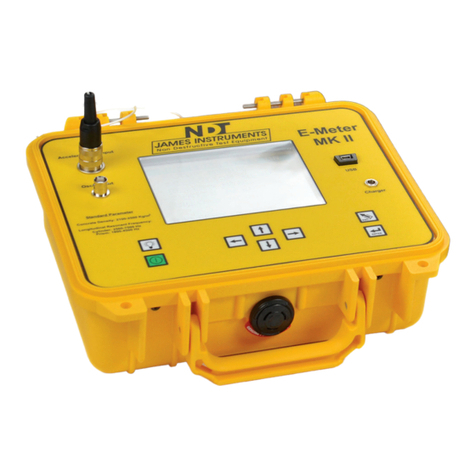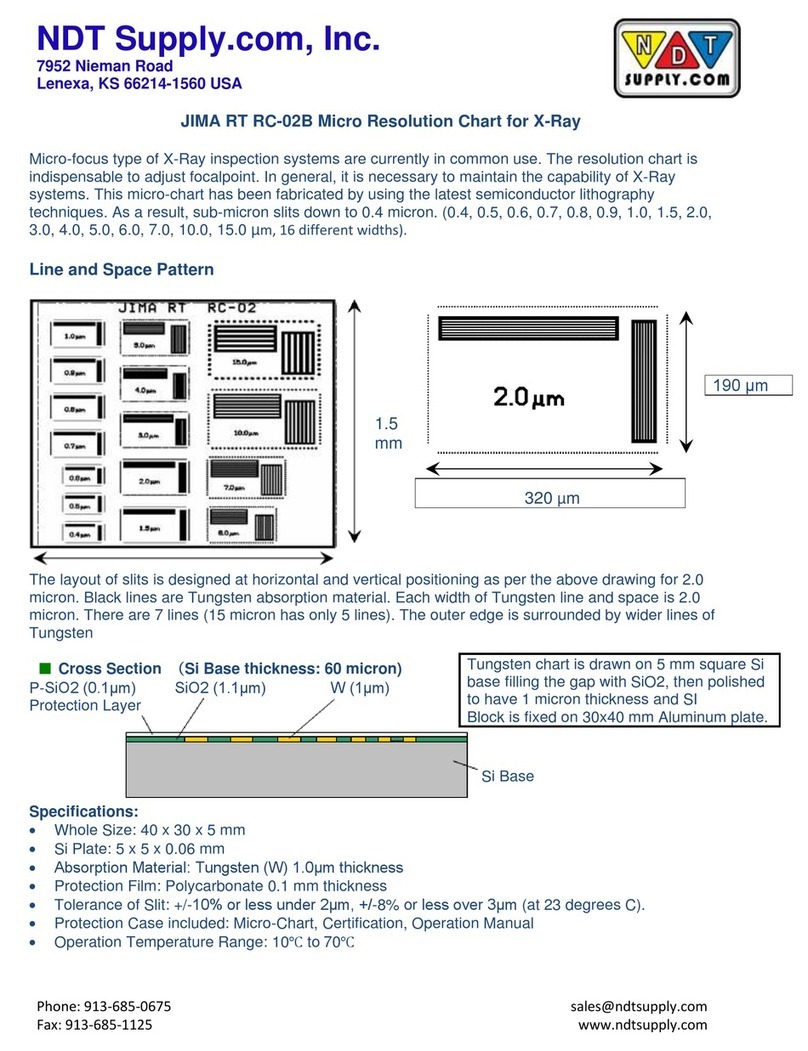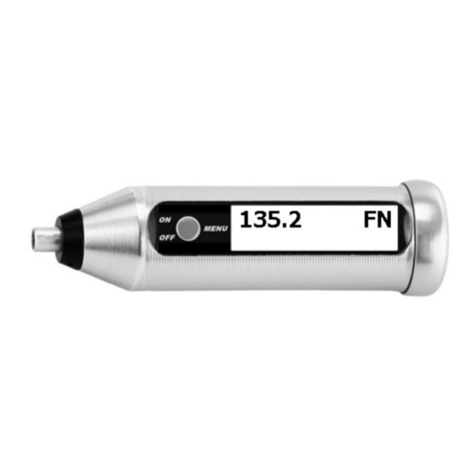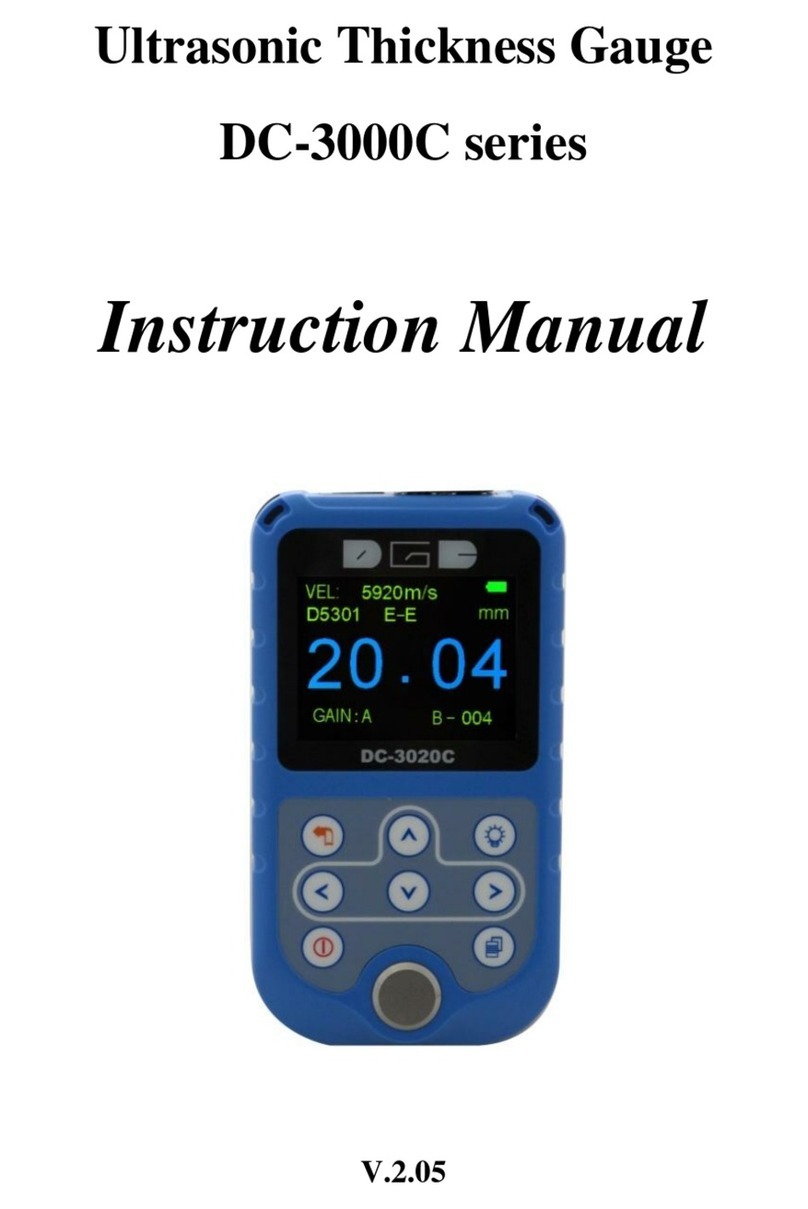
NDT INTERNATIONAL, INC. NDT-710 Thickness Gauge
2
A Basic Introduction to Ultrasonic Thickness Gauging
Ultrasonic thickness gauging is a widely used technique for measuring the thickness of a
material from one side. The first commercial ultrasonic gauges, using principles derived from
sonar, were introduced in the late 1940's. Small portable instruments dedicated to a wide
variety of applications became common in the 1970's.
Sound energy can be generated over a broad frequency spectrum. Audible sound, for example,
is restricted to a low frequency range with a typical upper limit of twenty thousand cycles per
second (or 20 Kilohertz or KHz). Ultrasound is sound beyond the limit of human hearing;
frequencies that are too high to be detected by the human ear. Thickness gauges for industrial
use operate at frequencies in the Megahertz range, typically from 1 to 20 MHz.
Ultrasound at high frequencies, because of the very short wave-length, has the advantage that it
can be used to make very accurate thickness measurements on most engineering materials.
Even more important, measurements can be made from one side only as the ultrasound waves
inside a material will bounce back from the opposite surface (like an echo). Thus thickness
measurements can be made instantly and accurately when the other side of the test part is
impossible or difficult to reach, with no need to cut parts for access. Ultrasonic thickness
measurements will save material, time, and labor costs.
HOW DOES IT WORK?
All ultrasonic measurements require two components: an electronic device (the gauge itself)
and an ultrasonic transducer. In order to make a thickness measurement the gauge transmits a
pulse of electrical energy to the transducer, which then converts this energy into high frequency
sound waves. This ultrasound enters the test material at the point of contact and propagates
through the material until it reflects from the opposite surface. Some reflected sound will travel
back to the point of entry, where it’s detected by the same transducer. In essence, the
transducer listens for the echo from the opposite side. In turn, the transducer converts sound
energy into electrical energy. The electronic circuitry of the gauge then precisely measures the
time interval between the initial pulse (or reference pulse) and the echo from the back wall.
Typically, this time interval is a few millionths of a second. The gauge computes actual
thickness of the test material by multiplying the time interval by the speed of sound in the
material and then dividing this by two in order to compensate for the round-trip transit time.
It is important to note that the velocity of sound in the test material is an essential part of this
computation. Different materials transmit sound at different velocities, and the sound velocity in
some materials will change significantly with temperature or composition. Therefore it is always
necessary to calibrate an ultrasonic instrument to the speed of sound of the test material at
hand. Accuracy of a measurement will be only as good as this calibration.
































